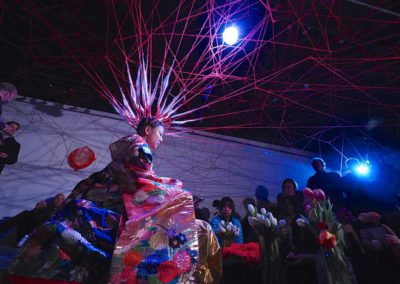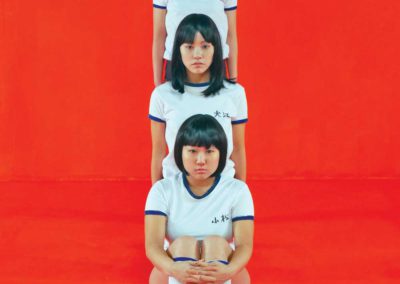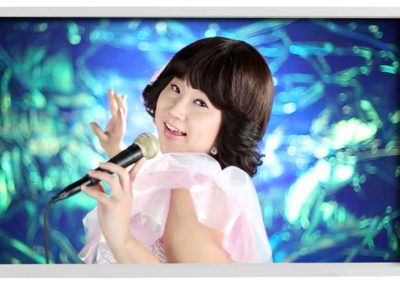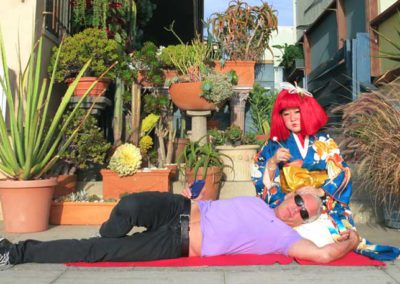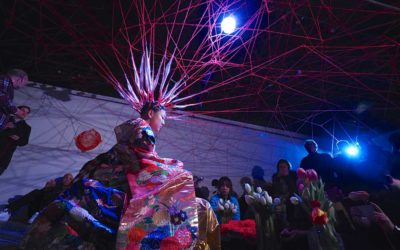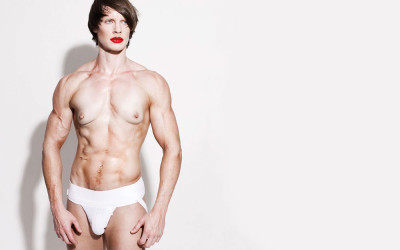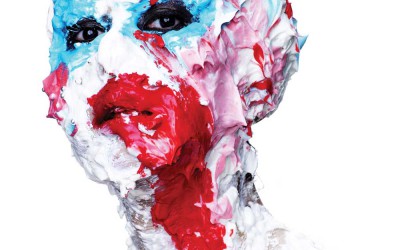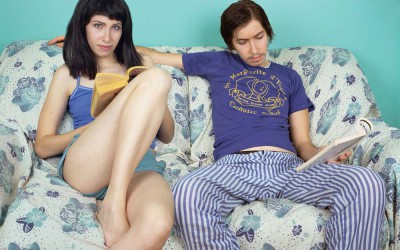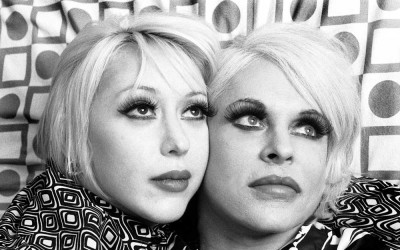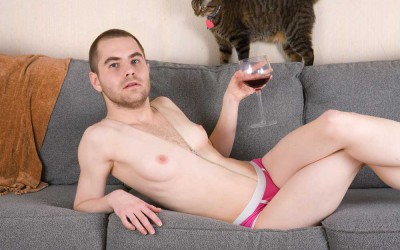Artist Ayakamay explores the interrelationship between photography and performance. She simultaneously appropriates traditional Japanese cultural aesthetics and creates a dialogue with contemporary American urbanity and femininity…..
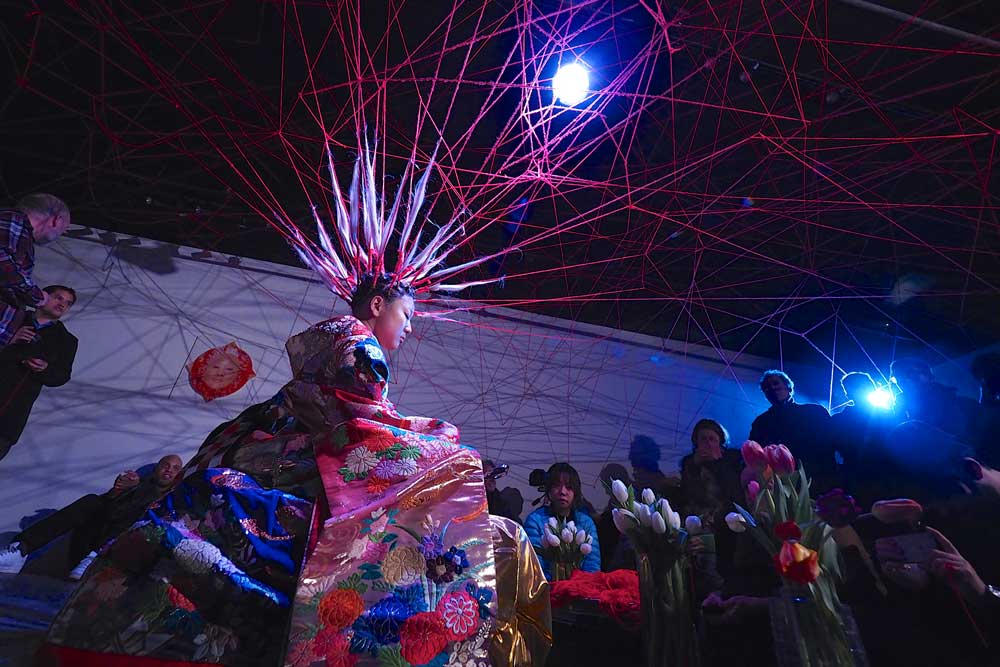
Ayakamay
Ayakamay
Text JF. Pierets Photos Courtesy of Ayakamay
Artist Ayakamay explores the interrelationship between photography and performance. She simultaneously appropriates traditional Japanese cultural aesthetics and creates a dialogue with contemporary American urbanity and femininity, through the whimsical lens of her personal experience as a Japanese-American woman. A conversation about interactive performances, pursuing your goal and fitting in.
Can you take me through the creative process of your last performance GENDERLESS?
Charles Leslie, founder of the Leslie – Lohman Museum of Gay and Lesbian Art in New York City, asked me if I wanted to perform in their space because he liked my previous work, IDOL WORSHIP, and because he thinks I’m a gay man trapped in a woman’s body. I felt very liberated after he’d said that. The title GENDERLESS comes from the fact that Ayakamay believes that there is no gender. I’ve been with women, men, and at one point I even had a gay boyfriend. I was curious to explore what being without gender meant to me. I know that biologically I’m a woman, but when you talk about your feelings, your soul, or something that you cannot see, it doesn’t have any gender. So I shot hundreds of portraits of myself, trying to express my femininity and masculinity. If you look at your face you can see both your mother and your father, I was splitting it up to figure out which part comes from whom. I discovered that one side of my face looks like my mother and the other like my father so I made photo prints where I mirror those exact sides. Therefor giving myself a more masculine, feminine or neutral face.
People often judge someone’s gender by looking at the face, since that’s the most identifying part of your body. By shooting my own picture and using make-up and facial hair, I realized that it was only about changing things on the outside. Inside, I’m still a woman in a woman’s body. I kept searching on what being genderless meant to me and at one point I even got confused and depressed because I realized I could not escape from my gender. Through the portraits I started creating I searched for a way to become genderless, if that even exists. The most significant thing I kept changing in the portraits was my hairstyle. So a few days before the performance I decided I had to have my hair shaved by the audience.The creative process was basically me, thinking I was genderless – which I was not – and then wanting to become that. Kind of looking for a utopian state.
Did the audience willingly participate?
They did, the audience took turns in cutting my hair and they were more emotional than I was. My performance is all about the third person. The audience comes in and they complete my work. The fact that people wanted to take my strands of my hair home with them, became very touching to me. For me, it was a successful performance because nobody stabbed me with the scissors.
Is your work always so intense?
I think my performances are indeed quite intense but they have a double layer. By making things very fabulous and gay, I try to make eye candy to get people’s attention at first. Yet in the end my work is very dark and contains a spiky message. One of my performances is that I dress up in a kimono with a big red wig. I don’t talk but when people ask me what I do, I ask if I can clean their ear. Some people say yes, some of them say “hell no!”. I’m challenging what people think. Some of them think I’m just a weirdo who will poke their brain out with the bamboo stick that I use, but somehow most of the people trust me and lay down on my lap. The performance causes a possibility of danger, but it is mainly about trust.
‘By making things very fabulous and gay, I try to make eye candy to get people’s attention at first. Yet in the end my work is very dark and contains a spiky message.’
Is it you performing, or are you in character?
I never feel like it’s another persona. I’ve been moving between different countries because of my parents’ job and I’ve always had difficult times fitting in to each place. I always knew that if I made new friends, it would only last for 3 months because then we would move again and I had to be another person all over again. I know I could have just been myself, but I didn’t want to get hurt so I made it impersonal. So I tried to be someone who came and went, which is something I still do in my performance. It’s a way to express where I came from, a different line to communicate with people.
Is performing something you have to do in order to keep balanced?
I think so, yes, because I was always an outsider, never able to fit in anywhere. People were always asking if I was a man or a woman, if I was Japanese or American, and at one point I didn’t want to answer those questions anymore. They made me uncomfortable because I didn’t feel I had to choose either one. Going somewhere and creating a surreal and odd atmosphere through my work, makes people as uncomfortable as I am. Sometimes there’s a harmony and that’s when people enjoy what they are seeing and experiencing. So yes, I have to say that I do have to perform in order to fully be who I am. In fact I’ve been performing for as long as I can remember.
Is the world you’re creating a fantasy?
I think it’s the opposite. I live in that world but it doesn’t fit in real life. For me it’s a fantasy to have a lover, to go to a movie theatre, eat dinner, and to cuddle at night. Things that people do on a regular basis are things that I cannot relate to.
When looking at your CV, I read that you had a breakthrough in 2014. What happened?
Until 2014 I was doing my performances, but making money helping out in photo productions. I didn’t earn very much but even if I hardly made enough money to pay the month’s rent, I realized that when I was stuck in one place, I was unable to see my future. In May of that year I decided to quit everything – I didn’t even have any savings – and go to Europe. Previously in New York I had met people from the Licht Feld gallery in Basel, Switserland. I wanted to be part of the art world so I needed to see more, show more, so basically my plan was to go to Switzerland and tell the people from the gallery I wanted to work with them. When they took me in right away, it was the beginning of my work being part of art fairs and being put up for display.
How is it being a woman in the art world?
I have the feeling that as a woman, you get judged more by what you are and how you look. It’s unfortunate, but if you’re discriminated as a woman, it’s the same thing as being judged upon the color of your skin. It’s all about the first look, isn’t it? And it happens all the time so maybe that’s why I keep continuing to perform, because maybe one day I can show that anything is possible. Also for women. I struggled quite a lot in my life and I have the feeling that if someone had shown me another way to let myself free, it probably would’ve been easier. So if I can be that person for someone, it would be great. Whatever you do or say, it always affects people.
Related articles
Ayakamay
Martin(e) Gutierrez
Artist and Et Alors? #14 cover model Martín(e) Gutierrez investigates identity, through the transformation of physical space and self. Interested in the fluidity of relationships and the role of gender within each, s/he employs mannequins as…..
Heather Cassils
Cassils first caught our eye in the ‘Telephone’ video, where the performance artist and personal trainer made out with Lady Gaga in the prison yard. Intrigued about this appearance, we discovered a highly intelligent artist who pushes the…..
Pyuupiru
‘I can never create work that lies.’ With those words Japanese visual artist Pyuupiru captures exactly the sensation an audience experiences when looking at her work. Starting off as a creator of eccentric costumes designed as clubwear that distorted her…..
Alone Time
JJ Levine is a Montreal-based artist working in intimate portraiture. Levine’s photography explores issues surrounding gender, sexuality, self-identity, and queer space. In the series ‘Alone Time’ Levine aims to make visually confusing images…..
Genesis Breyer P-Orridge
First Third Books released an ambitious new project on the life of Genesis Breyer P-Orridge – music pioneer, artist and body evolutionist. Independently produced in limited numbers, this is a superb quality book devoted to the controversial life and…..
Strange Bedfellows
Strange Bedfellows is a nationally traveling exhibition and catalogue exploring collaborative practice in queer art making. With names such as Annie Sprinkle, Amos Mac and Julie Sutherland they travel the world. Curator Amy Cancelmo is…..
